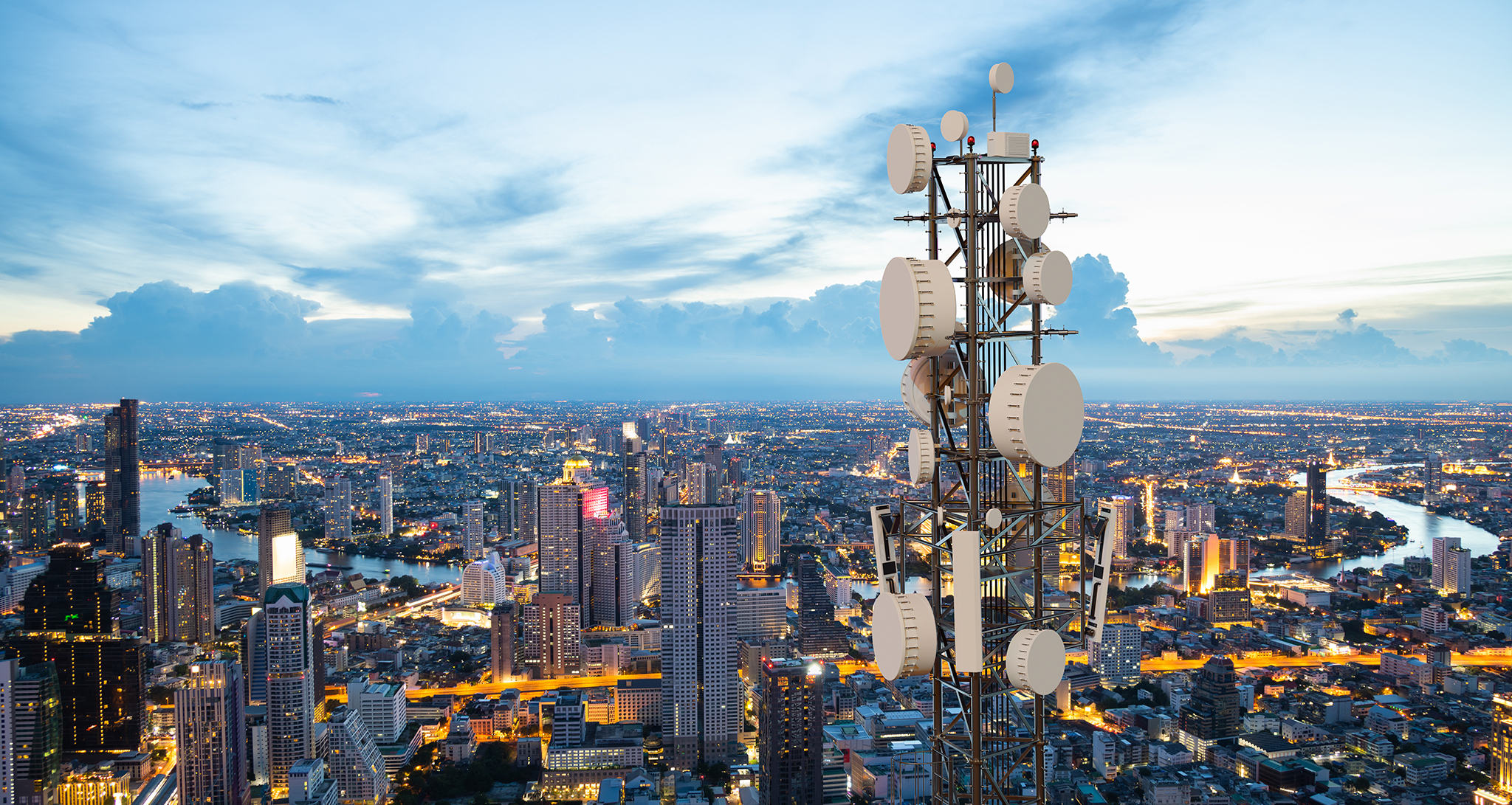The telecommunication industry enables us to connect and conduct business globally. This sector has become the foundation for businesses, governments, communities, and families to connect and share information seamlessly in today’s digital ecosystem. The Indian telecom industry has one of the most competitive markets in the world. India currently has over 6.5 lakh telecommunication towers and around 22 lakh telecom sites.
Telecommunication services have contributed tremendously to our country’s socio-economic development. Telecom towers are an essential component of the telecom network infrastructure. They are the most expensive to construct and utilize very costly equipment and materials. With the advancement of wireless communication technology, telecom sites have begun to house transmitting devices like cellular phones, personal communication services, and television and radio broadcast antennas.
Setting up any telecom site necessitates months of meticulous planning, substantial financial investment, expensive machinery, and a large workforce of varying specialities and functionalities. More emphasis is being given to dispensing unparalleled services to their existing customers due to the intense competition in the Indian telecom industry. To yield seamless services, the telecom sites must operate without any problems or accidents.
This article discusses the major safety issues at a telecom site, how to prepare for them, and what solutions can help safeguard valuable assets at a telecom site.
What Major Safety Issues Can Be Expected at A Telecom Site?
A telecom site, like any other industry, is vulnerable to a wide range of concerns. Some security issues cannot be identified in advance, whereas others can be anticipated and resolved with a long-term solution. When it comes to telecom site management, only avertable and predictable issues can be addressed through safety planning.
Physical Site Security:
Telecom towers are frequently erected in remote and isolated areas due to coverage reasons. Because of their difficult and inaccessible locations, such establishments are difficult to guard physically. This makes the telecom site more vulnerable to break-ins and thefts.
Unauthorized physical intruders pose a severe security threat, whatever may be the motive: trespassing, theft, or vandalism. Since critical telecom site infrastructure requires constant physical security monitoring but are unmanned due to their location, telecom sites and towers are more vulnerable to intrusion. One of the serious consequences of such a security breach is the possibility of disclosure of confidential information and legal implications from lawsuits by an investor.
Theft of expensive machinery, battery fuel, high-performance batteries, etc., leads to monetary loss and a halt in the functioning of the telecom site. Theft can result in significant financial loss for the company, both in terms of replacing equipment or machinery and downtime required before the site can perfectly function again. Additionally, copper theft is a major issue.
The physical security risks in a telecom site are caused by insufficient and improper access control. Physical security is paramount in telecom site management, where response needs to be proactive rather than reactive. A Remote Monitoring Unit (RTU) on entry and exit points, coupled with a Remote Monitoring Master System, aids in enhancing security.
Environmental and Thermal Challenges:
Location selection and planning for a telecom site is a strenuous task. The area’s environmental and climatic conditions play a significant role in determining if the selected site is feasible for setting up a telecom tower. A meticulous Site Survey is essential before selecting a location, including assessing natural calamities and damaging nearby activities, like toxic chemical spills, etc.
The most common environmental level that needs to be monitored is temperature. Although industrial machinery and equipment are made resilient; however extreme conditions may pose threats in the future. If the temperature gets too high, there’s a possibility of thermal shutdowns and if the temperature gets too low, there are chances of soft failures and equipment breakdown. If not monitored and maintained, these issues are recurring and can become costly very quickly.
Humidity Issues:
To ensure uptime and system reliability, a telecom site’s humidity levels must be monitored. When humidity levels get too high, there are chances of condensation buildup. Excessive uncontrolled humidity leads to puddling, which can cause increased chances of hardware corrosion and installation of gas early system and component failure.
A more significant cause of worry is when the humidity levels dip very low. Equipment may become susceptible to electrostatic buildup and discharge, damaging sensitive components. VNT offers specialized Earthing Study to combat electrical discharge security issues caused by humidity.
Toxic Gas Accumulation and Fire Hazards:
It is critical to protect your telecom site from dangerous gas buildup to save property and personnel. A telecom site is vulnerable to highly flammable hydrogen gas buildup caused by overcharging batteries, propane and methane leaks, and other potentially toxic air contaminants. Because of the confined spaces in telecom sites, fire and gas explosion risk increases as these gases accumulate. The installation of a gas detection and fire detection system ensures a safe working environment while maintaining productivity and meeting regulatory requirements.
Our comprehensive range of automated fire safety solutions reduces fire-related incidents and events in critical areas. Our Stat-X Aerosol Fire Suppression Systems offer an overall approach to detecting and effectively controlling fire hazards at telecom installations.
Remote Monitoring System – A Comprehensive Solution for a Majority of Telecom Safety Issues
Typical telecom operation assets are spread across many kilometers, covering urban and remote areas. It is not possible to monitor each site separately. Even so, the information available is prone to errors and inaccuracies. A Remote Monitoring System is installed in telecom sites and towers that continuously monitor equipment across multiple locations to address this issue. A competent Remote Monitoring System (RMS) is the permanent solution to the aforementioned telecom site safety issues.
Telecom site automation is a low-cost solution that improves telecom companies’ efficiency in their sites. It addresses safety concerns and offers solutions to improve power, security, and environmental management at remote locations.
- Coupled with an RTU on entrances and exits, an RMS can efficiently and promptly detect unauthorized personnel entry or unusual activity at a telecom site.
- RMS can also be set up with a temperature threshold.
- RMS can send out alerts when humidity levels experience a disturbance or exceed the safety range.
Thus, when such unwanted instances occur, alerts can be immediately sent to concerned systems and authorities. Once configured, Remote Monitoring of the Telecom Site becomes effortless.
VNT – Promising Results Guaranteed with our Telecom Solutions
VNT provides telecom solutions for the telecommunication sector to manage various safety issues at remote telecom sites from their network operations centre. We offer flexible and adaptable automated Remote Monitoring Solutions. Our Remote Monitoring Systems would allow operators and tower companies to monitor site security and control site access actively.
To know how our industry-leading solutions can assist you in your business, contact us.

